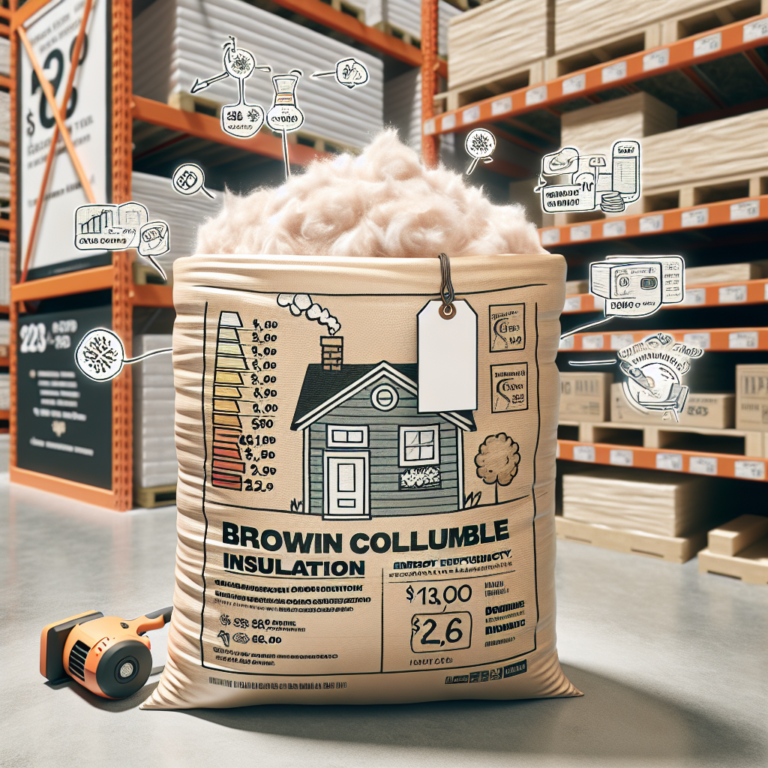Efficient Attic Insulation: How Installing Blown In Under Floor Can Save You Money
Introduction
Blown in insulation under floors is a highly effective way to improve your home’s energy efficiency and comfort. By filling the cavities between floor joists with loose-fill materials—such as cellulose, fiberglass, or mineral wool—you create an invisible thermal barrier that prevents heat loss in winter and heat gain in summer. Not only can this method lower your energy bills, but it also enhances soundproofing, moisture control, and overall indoor comfort. Read on to discover how installing blown in insulation under floors can save you money and transform your living space.
H2: Benefits of Blown In Insulation Under Floors
Investing in blown in insulation under floors offers multiple advantages:
• Significant Energy Savings
– Reduces heat transfer through the floor, easing the workload on HVAC systems
– Cuts heating and cooling costs by up to 20% annually
• Enhanced Comfort
– Eliminates cold, drafty floors and keeps tile or concrete surfaces warmer
– Creates an even temperature throughout multi-story homes
• Superior Soundproofing
– Absorbs airborne noise between levels, making bedrooms and home offices quieter
– Improves privacy and reduces disruptive foot traffic sounds
• Moisture and Mold Prevention
– Acts as a vapor barrier in basements and crawl spaces, blocking ground moisture
– Lowers the risk of mold growth and structural damage
• Airtight Seal
– Conforms to irregular joist spacing and fills small gaps traditional batts miss
– Stops drafts and prevents conditioned air from escaping
• Environmental Friendliness
– Often made from recycled materials like shredded newspaper or glass fibers
– Free of harmful chemicals, safe for families and pets
• Quick, Hassle-Free Installation
– Professional crews can complete most jobs in just a few hours
– Minimal disruption to daily life; no major demolition required
H2: Step-by-Step Guide to Installing Blown In Insulation Under Floors
Proper installation ensures maximum performance and longevity. Follow these steps:
1. Prepare the Space
• Clear debris, dust and any existing insulation remnants.
• Seal visible gaps or cracks in subflooring with caulk or foam sealant.
2. Measure and Order Insulation
• Calculate the square footage between joists.
• Purchase 10–15% extra material to account for settling and uneven fill.
3. Choose the Right Material
• Cellulose: Excellent eco-friendly option with high sound absorption.
• Fiberglass: Resistant to moisture, ideal for damp crawl spaces.
• Mineral Wool: Superior fire resistance and thermal performance.
4. Gather Protective Gear
• Wear gloves, goggles, and an N95 mask to guard against dust irritation.
5. Set Up the Blowing Machine
• Position the machine in a well-ventilated area.
• Feed the insulation into the hopper according to manufacturer instructions.
6. Blow in the Insulation
• Insert the hose into the joist cavities, starting at one end and working systematically.
• Maintain consistent hose speed and pressure to achieve an even R-value.
7. Level and Inspect
• Use a long rod or rake to gently level any high spots and fill low areas.
• Check for missed gaps; top up as needed to meet recommended depth.
8. Clean Up and Seal
• Vacuum any loose particles and store leftover material properly.
• Install a vapor barrier if your local code recommends it for moisture control.
H2: Common Mistakes to Avoid When Installing Blown In Insulation Under Floors
Beware of these pitfalls to ensure a safe, efficient installation:
• Inadequate Preparation
– Skipping debris removal or gap sealing reduces insulation effectiveness.
• Wrong Material Choice
– Using cellulose in moisture-prone areas can lead to mold; fiberglass or mineral wool may be better.
• Insufficient Coverage
– Under-filling joists compromises R-value; always follow manufacturer depth guidelines.
• Compression of Insulation
– Packing insulation down lowers its thermal performance; avoid stepping on or overfilling.
• Poor Ventilation
– Failing to ventilate during installation can trap dust and fibers indoors.
• Neglecting Safety Gear
– Skin and respiratory irritation are common without proper masks, goggles, and gloves.
H2: Q&A
Q: How do I know if my floors need blown in insulation?
A: Check for cold spots, drafts, uneven room temperatures and high energy bills. An infrared camera or professional energy audit can confirm heat loss areas beneath floors.
Q: Is blown in insulation noisy to install?
A: The blower machine creates some noise, similar to a shop vac, but installation usually takes only a few hours. Plan for minimal disruption by scheduling during off-peak hours.
Q: Can I install blown in insulation myself?
A: DIY kits are available, but professional installers ensure correct R-value, complete coverage and compliance with building codes. Their expertise often pays for itself through energy savings and warranty protection.
Conclusion
Embracing blown in insulation under floors is a smart, cost-effective strategy for efficient attic insulation and overall home comfort. By sealing hidden gaps, reducing heat transfer and improving acoustics, you’ll enjoy lower energy bills and a cozier living environment year-round. Whether you’re renovating an older home or building new, consider blown in insulation under floors to secure long-term savings and peace of mind.












